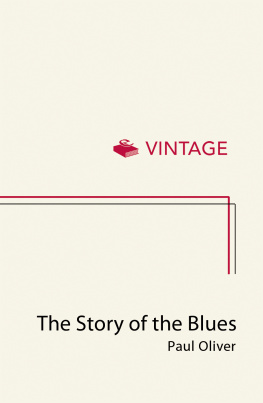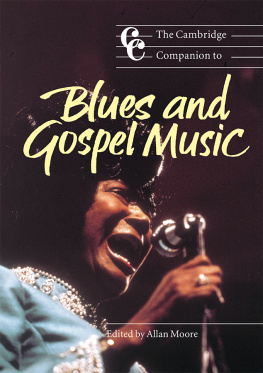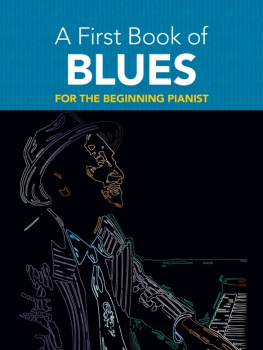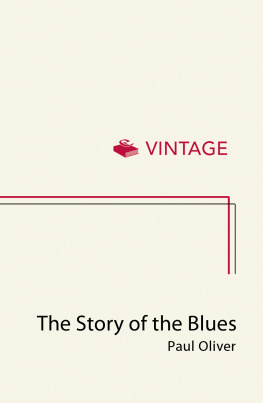
A BAD WOMAN FEELING GOOD
Blues and the Women Who Sing Them
BUZZY JACKSON

This book is dedicated
to my parents
Ruth Baum Jackson Hall and Jon A. Jackson
to my mentor
Leon F. Litwack
and to
Ben
my sweetheart.
CONTENTS
This book was originally conceived as a doctoral dissertation at the University of California, Berkeley, and the support of many people there made its completion possible. Thanks to Mabel Lee, Sandy Richmond, Heather McCarty, Laura Mihailof, and Justin Suran of the History Department; Cheryl Griffith-Peel at the Music Library; Elissa Mondschein at Interlibrary Borrowing Services; and my always supportive and inspiring doctoral dissertation committee: Leon F. Litwack, Waldo E. Martin, and Olly W. Wilson.
To Gary Morris, my friend and agent: your vision and your enthusiasm made this book possible. Thank you.
To Amy Cherry, my wonderful editorthank you for your enthusiasm and your brilliant suggestions and for all the work you put into this book.
Thank you, Lucinda Williams and Laura Joplin, for the time you contributed to this book, and for helping me better understand the blues.
For spiritual and intellectual inspiration way back in the beginning, thanks go to my family, Ben Kirshner, the Meschery family, and Greil Marcus.
And finally, it is with deep gratitude that I acknowledge the blueswomen whose music has been such a huge part of my life these past several years. To Ma Rainey, Bessie Smith, Billie Holiday, Etta James, Aretha Franklin, Tina Turner, Janis Joplin, Joni Mitchell, Patti Smith, Courtney Love, and Lucinda Williams: You showed me the air, I tried to fill it.
Throughout the twentieth century, a powerful tradition of American women singers has helped women everywhere find their own voices. The lives and art of these women singers set new examples, challenging the limits society had placed on womens personal achievements and expectations. These singers discovered truer versions of themselves when they broke societys rules about how women should act, look, sound, and feel. They refused to follow the rules of good behavior, and in the process earned some scandalous reputations. Bad women? Perhaps. But being good had never gotten them anywhere.
The chapters that follow are a chronicle of the influence and a testament to the very real power wielded by these women artists, a power that has often been overlooked, just as these artists have been overlooked in traditional stories about important people in American music and notable figures in American history. A Bad Woman Feeling Good tells a different storyone in which the names, faces, and voices are familiar, but their roles are not. The stories of these singers lives shed light upon the changing historical context of women in the twentieth century, and their art is a window onto the inner lives of women at that time. Each generation of women found its own Bessie Smith, Billie Holiday, or Janis Joplin, a woman willing to testify to her inner pain and pleasure.
One hundred years ago, American women singers first began cultivating their own style of music, using the blues as a medium for deep truth-telling about what it meant to be a woman. A Bad Woman Feeling Good starts with these first blueswomenMamie Desdoumes, Gertrude Ma Rainey, and the immortal Bessie Smithexploring their work and phenomenal success in the early days of recording. These artistic pioneers staked out territory for women artists that provided a safe haven for strong women in the century that followed. The success of the early blueswomen was crucial to the survival of many early recording companies, and thus women laid claim to an important role in the industry from the earliest days of this new form of mass media. This role has made popular music a cultural vehicle for representations of female strength in a way that film and television have never matched. The early blueswomen were strong, sexy, aggressive, emotional, spiritual, and absolutely unashamed of their desires and demands, and so were the singers who followed them.
Singers such as Billie Holiday arrived in their wake, with an air of dark mystery that brought a sense of danger to jazz. Etta James consciously crafted a bad girl persona that gave new energy to 1950s rhythm and blues, and likewise Tina Turner, whose gutsy, scorching voice catapulted her husband Ikes group from dive bars in the Deep South to world tours with the Rolling Stones. Then there was Aretha Franklin, a good girl among bad women whose turn from gospel to rock n roll created its own revolution, with a voice that spanned heaven and hell. And Janis Joplin, whose reinterpretation of the early blueswomen brought new depth to 1960s rock, and whose influence upon subsequent generations of female and male singers has yet to be fully acknowledged. From Joplins day to the present, the blueswomens legacy has survived in musical form but, more important, as an attitude toward life, and it can be found in the work of singers as musically diverse as Patti Smith, Lauryn Hill, Courtney Love, and Lucinda Williams. None are traditional blues singers, but all are living examples of the heritage passed down by the early blueswomen.
While the singers profiled here have much in common, they are different, too. In a century when the realities of womens lives experienced radical change, the lives and work of each one of these singers responded to and reflected the historical context of her own time. From Ma Raineys Traveling Blues (1928), which gave voice to Southern black women yearning to move north, to Janis Joplin, whose explosive 1960s concerts drew thousands of women who were, in Joplins own words, lookin for liberation, this legacy of women in music identified the issues central to womens lives and insisted that the world take notice. It was Ma Raineys piano player, Thomas Dorsey, who said, The blues is a good woman feeling bad. The greatest American women singers wouldnt have denied it, but they took the blues and reworked it according to their own gifts, proving that there were other, equally significant contributions to be made by a bad woman feeling good.
Bad WomenThe Early Years:
Mamie Desdoumes, Sophie Tucker, Mamie Smith, and Ma Rainey
1902
In some little dancehall... one can often hear a Negro girl singing the same melody for an hour at a time, a melody which is often shrill, but quite as perfect as any of the beautiful classic recitatives.... Here we are at the first sources of this music, with its deep human content which is about to create as complete a revolution as any of the masterpieces now universally recognized.
Darius Milhaud, 1924
In Some Little Dance Hall
This is the demimonde. All the way against the back wall, far from the streets outside and its throngs, a lone woman stands on a bare wooden stage, a piano player beside her as she counts off the time, two, three, four, and Ive been downhearted, baby.... The demimonde, this is where the half of the world that works on being respectable loses its cool and drifts into the worlds other half, which doesnt care what anyone else thinks at all. The singer, a woman (never a girl, her voice tells that much) with Africa and the New World in her blood and on her skin, smiles and sweats in the crowded, noisy room where drinking has been going on for days and weeks without stop, fearing a crackdown. There is always the specter of the Law and its foibles, even in Storyville, where prostitution is legal, drinking is legal, gambling is, well, overlooked. Storyville is a free ticket where people work for their money, not least the woman in the back of the saloon, singing the blues over the laughter and shouts of a roomful of happy men. The women in Storyville are there to work, not play. They sing, play piano, dance, fetch food and drinks, and take men to bed to pay their bills, and their music reflects it, these songs of happiness, sadness, and death.
Next page











